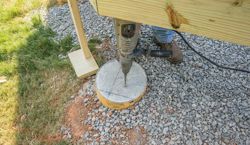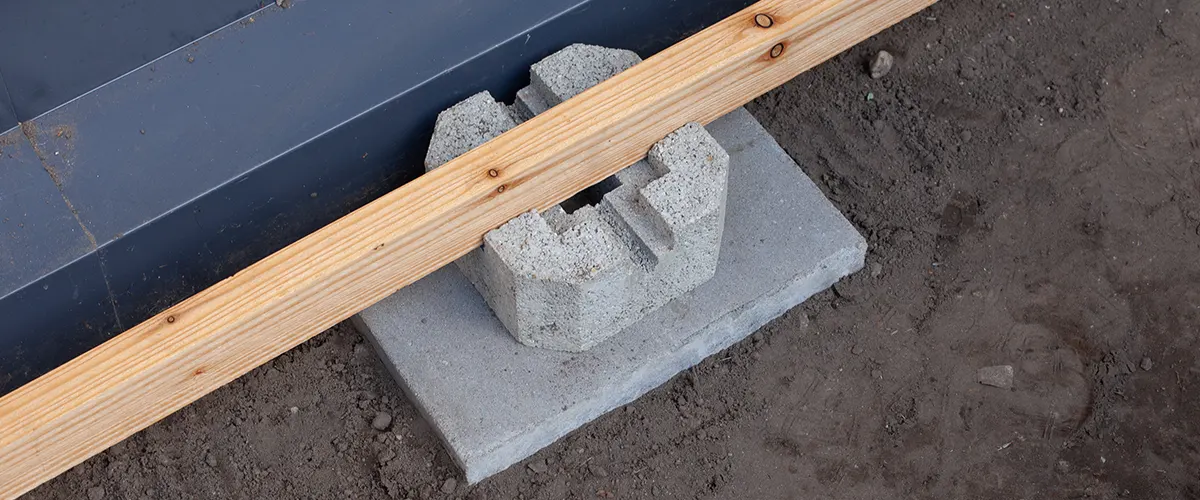Strong Structures, Stunning Decks: The Ultimate Overview to Deck Footings
Building a Strong Structure: Revealing the Tricks of Deck Footing
A strong and properly designed deck footing is vital for the stability and durability of any type of deck structure. In this helpful overview, entitled "Structure a Strong Structure: Revealing the Secrets of Deck Footing," we will certainly explore the relevance of appropriate footings, the various types offered, and the factors to think about when picking the ideal ones for your deck task. We will certainly go over the importance of regular maintenance and inspection to make sure the ongoing safety and security and durability of your deck footings.
Importance of Proper Footings

Among the key factors why correct footings are vital is to stop the deck from changing or sinking. Grounds that are not deep sufficient or are badly constructed can trigger the deck to settle unevenly or change gradually. This can lead to an irregular deck surface area, creating a stumbling threat and endangering the structural stability of the whole deck.

Additionally, appropriate footings additionally aid to secure the deck from wetness damage. By elevating the deck framework in the air, footings stop the timber from entering into straight contact with dampness, minimizing the danger of rot and decay.
Kinds Of Deck Footings
The option of ideal deck grounds is a critical aspect in making sure the security and durability of a deck framework. There are several kinds of deck grounds that can be made use of, each with its own advantages and factors to consider.
One common sort of deck footing is the concrete pier footing. This involves excavating openings in the ground and putting concrete to produce a solid structure for the deck. Concrete piers are versatile and can be utilized in a variety of soil problems, making them a popular option for lots of deck jobs.
An additional alternative is the helical pier footing. This kind of footing contains a steel shaft with helical plates that are screwed into the ground. Helical piers are optimal for locations with bad dirt conditions or locations prone to high water tables. They provide excellent stability and can be changed to the preferred height.
For decks improved level or shallow structures, a shallow ground may be proper. Superficial grounds are usually made from concrete and are put directly on the ground surface. They are best fit for smaller decks or locations with steady soil problems.
Elements to Think About When Selecting Footings
When choosing footings for a deck, it is very important to meticulously consider several aspects that will ultimately figure out the security and longevity of the framework. The first element to take into consideration is the type of soil on which the deck will be constructed. Different dirt types have differing load-bearing abilities, so it is vital to examine the dirt's ability to sustain the weight of the deck. Additionally, the climate of the area ought to additionally be thought about. Extreme weather problems, such as hefty rainfall or freezing temperature levels, can affect the ground and possibly trigger movement or changing of the footings. Another vital variable is the dimension and height of the deck. Bigger decks with heavy loads or several degrees need more significant footings to provide adequate assistance. The materials used for the grounds must be chosen carefully. Usual alternatives consist of concrete, helical stacks, and sonotubes. Each product has its advantages and negative aspects, so it is necessary to think about factors such as cost, simplicity of installation, and upkeep needs. Consulting with a specialist engineer or service provider can make sure and provide important insights that the chosen grounds satisfy regional building codes and regulations. By very carefully taking into consideration these factors, home owners can make enlightened decisions when selecting footings for their deck, making certain a resilient and stable structure.
Actions to Prepare and Set Up Grounds
To prepare and install grounds for a deck, it is important to comply with a methodical technique that makes sure stability and toughness. The very first action is to figure out the dimension and number of grounds required based on the deck design and regional structure codes. By complying with these actions carefully, one can make sure websites that the footings are properly prepared and mounted, supplying a strong structure for the deck structure.
Upkeep and Examination of Deck Footings
To make sure the long-term stability and safety and security of your deck, regular maintenance and thorough assessments of the deck footings are vital. The deck grounds serve as the foundation of your deck, sustaining the weight and load of the whole structure.
Routine upkeep should consist of aesthetic evaluations of the grounds, looking for signs of damage or damage. These can include fractures, sinking or changing of the grounds, or indicators of water damage. Furthermore, it is necessary to examine the security of the grounds by using pressure or conducting tons tests if required.
Along with aesthetic evaluations, it is recommended to arrange specialist examinations every few years. Professionals can evaluate the structural integrity of the footings much more precisely and offer experienced advice on any type of essential fixings or substitutes.
Moreover, appropriate maintenance additionally entails taking preventive actions to shield the grounds (Deck Footings). This can include applying water resistant finishes to avoid water additional hints damages, ensuring correct drain to avoid excessive dampness, and routine cleaning to eliminate debris and protect against build-up
Final Thought
To conclude, proper deck grounds play a vital duty in making sure the stability and durability of a deck. By recognizing the different types of grounds readily available and considering variables such as soil problems and neighborhood structure codes, home owners can make enlightened choices when choosing footings for their deck. Additionally, normal maintenance and inspection of deck grounds is necessary to determine any prospective issues and guarantee the safety of the framework.
In this helpful overview, titled "Building a Strong Structure: Introducing the Secrets of Deck Footing," we will explore the relevance of correct footings, the different types readily available, and the elements to take into consideration when selecting the best ones for your deck task.One common type of deck ground is the concrete pier ground.To guarantee the lasting stability and security of your deck, normal upkeep and comprehensive inspections of the deck footings are crucial.In conclusion, appropriate deck footings play an essential duty in ensuring the stability and durability of a deck. go to this web-site By recognizing the various types of footings offered and thinking about elements such as soil problems and neighborhood structure codes, home owners can make enlightened choices when picking footings for their deck.